Late last month I had the opportunity to attend Honeywell Aero’s International Media Event in Phoenix, AZ. The symposium focused on all things Honeywell and AvGeek, with a small and diverse audience of mainstream media and bloggers from all across the world.
Prior to the event, I understood that Honeywell was, like many other conglomerates, well-established in the aviation industry. Indeed, we’ve written extensively about how Honeywell improves aviation safety, we have geeked out over their incredibly diverse fleet of test aircraft and, of course, have covered their innovative and (can we say exciting? Because it is!) Electric Green Taxi System, EGTS.
But even with this coverage, we’d only begun to scratch the surface of Honeywell’s Aerospace operations. In just shy of two days, with their incredibly passionate crew, I learned more about the company and their products than I had over a lifetime of being an aviation enthusiast.
Assembly plant tour:
We began with a tour of Honeywell’s engine and APU (auxiliary power unit) assembly plant, which spans 120 acres and has been in operation since the 1950s, although you would never guess the age of the facility based on how clean, bright, and organized it is.
Here, over 2,500 employees (nearly half of which are engineers) produce in excess of 2,500 engines and APUs each year. Honeywell has shipped over 90,000 units since they first introduced the technology back in 1947.
Enhanced Ground Proximity Warning System (EGPWS) and a test flight on a Convair CV-580:
After the plant tour, we headed out to Phoenix Sky Harbor Airport to meet with Honeywell Aero’s chief test pilots and learn about flight safety and situational awareness systems; in particular, EGPWS.
Following a brief presentation describing what EGPWS is, I was invited aboard their 1952 Convair CV-580 for a demonstration flight. The juxtaposition of the latest and greatest technology, packed into the airframe of the second CV-580 ever built, was simply incredible; the best of the past and the future in one beautiful plane.
So, what is EGPWS? Simply stated, it’s a system that compares the plane’s location, altitude, and glide-scope with a terrain and obstacle database. An always-on system, it alerts pilots of potential conflicts between the flight path and what lies ahead.
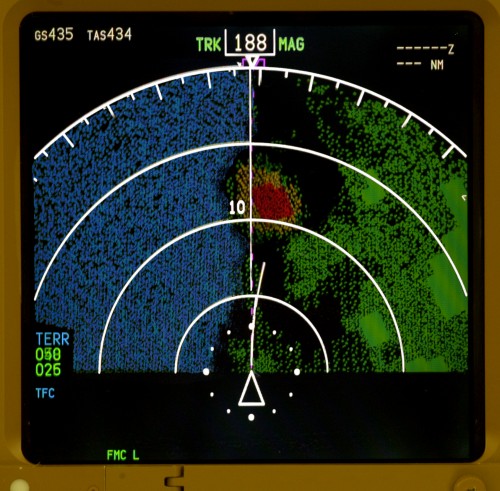
An EGPWS screen illustrates terrain above current flight level (in red) directly ahead Image: Honeywell Aero
Aboard the aircraft, many seats have monitors replicating displays seen on the flight-deck. Each seat is equipped with headsets so passengers can listen to ATC, the pilots, and the various flight safety systems.
After a turbulent (exciting!) takeoff and ascent, the pilots found a mountain and turned towards it. An eerie red blotch appeared on the EGPWS display and slowly approached. Within moments, the safety system was alerting us of the conflict – “TERRAIN…. TERRAIN”, as we continued our approach again, we received a warning “TERRAIN, PULL UP, PULL UP!” and within seconds the engines of the CV-580 whirred and we were in a steep banking climb away from the hazard.
There is no better way to understand the significance of this technology than to experience it first-hand – what a rush!
I later quipped to our hosts that all they need to do to get this technology in every airplane in the world is convince airline executives to take a demonstration flight:
How to test @Honeywell_Aero‘s Enhanced Ground Proximity Warning System (EGPWS): Take a classic plane full of #avgeeks, aim at a mountain 🙂
JL Johnson. Avgeek (@user47) May 21, 2014
Engineering Symposium:
The day ended with an opportunity to meet Honeywell Aero engineers and discuss their new and upcoming technology: 3-D printing for quick prototyping, tablets in the cockpit, use of advanced ceramics in engines, and more.
I was surprised to learn that cockpit systems aren’t updated automatically on-demand, but require manual updates and downloads. Honeywell, along with their partners, have developed technology that allows for wireless database refreshes along with wireless downloads of maintenance and performance information.
These tasks seem routine in today’s “internet of things” environment, but it’s important to understand that unlike an iPhone, a plane and its components are designed to last decades (or in the case of Honeywell Aero’s CV-580, 62+ years!) While the flight deck technology is incredibly advanced, interfaces with it must be tested and there is an unfortunate slow adoption rate with airlines.
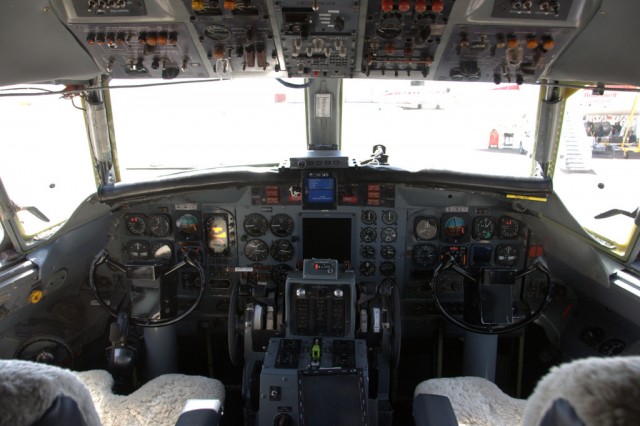
Old and new – the new technology from Honeywell meets a classic Convair in the cockpit – Photo: JL Johnson | AirlineReporter
Meet and greet with executives and advanced technology labs
Our second day was dedicated to learning about technology still in development at Honeywell, and included exclusive never-before granted tours of the highly secretive advanced tech labs. In these labs the latest and greatest technology is tested and this is where I, as an HCI (human-computer interface) “usability geek” was excited to see two of my passions cross paths.
As a non-pilot, I’ve often looked at cockpits, flight management and other systems and declared there are far too many stimuli and distractions. Indeed, there is room for consolidation, and this is where Honeywell’s engineers have the opportunity to transform the pilot’s user experience.
The technology labs we toured had six-axis simulators for testing of pilot ability (or inability) to interface with touch screen technology in turbulence. There were voice recognition tests and even eye-tracking interfaces that allow pilots to access menus and manipulate controls with simple eye gestures. There was even evidence that Honeywell was looking to deploy a somewhat new strategy of Gamification in certain systems.
Seen above is Honeywell’s SmartView system, which integrates inputs from numerous channels and displays them in an intuitive fashion. Items that are needed only at that exact time are displayed, whereas unimportant or unnecessary data are suppressed.
As I knew prior to visiting Honeywell, they are a significant contributor to the aviation and aerospace industries. As a manufacturer of engines, APUs, lighting, and various other “hard” components of aircraft, they could easily be classified simply as a hardware manufacturer. But with their hands in flight safety systems and software, they are more than that. Perhaps it’s best to view Honeywell Aero for what it truly is; an aviation and aerospace innovation company. That ties in quite well with their motto “Possibilities of flight. Made easy.”
I look forward to seeing which new technologies come to fruition. It’s an exciting time in the industry, and you can see it on the faces of the Honeywell Aerospace employees.
Disclosure: Accommodations and experiences were provided by Honeywell; our opinions are our own.
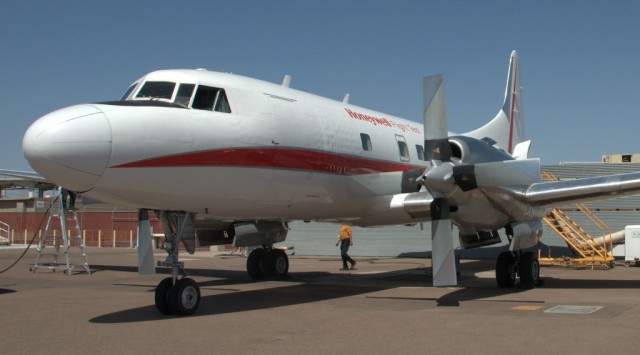
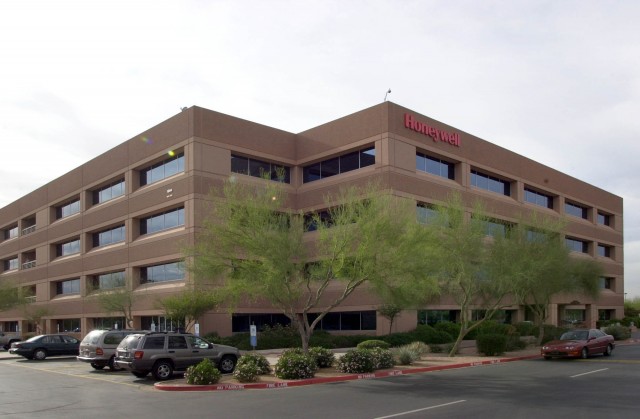
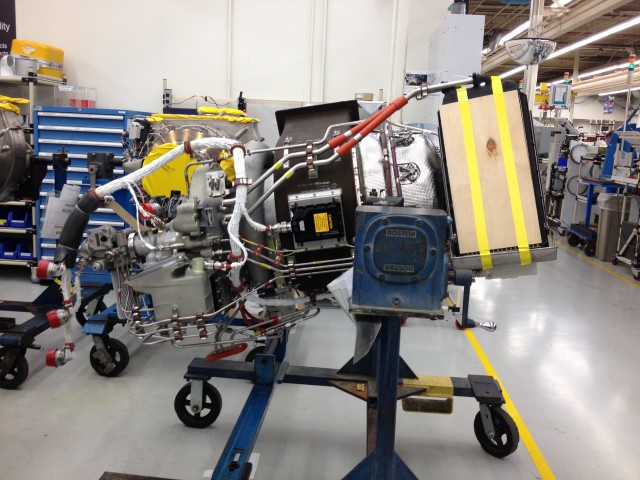
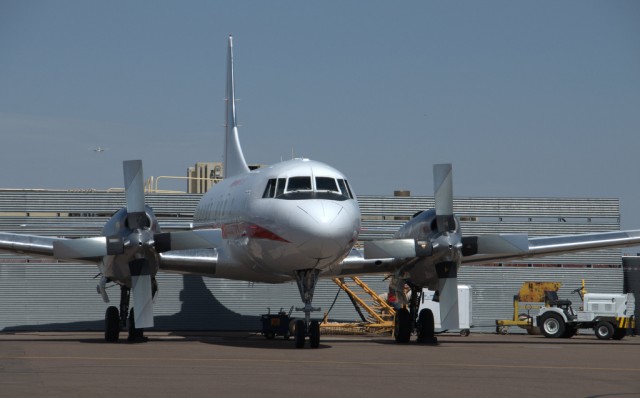
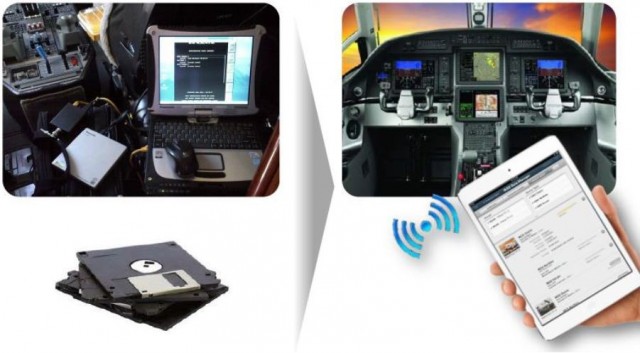
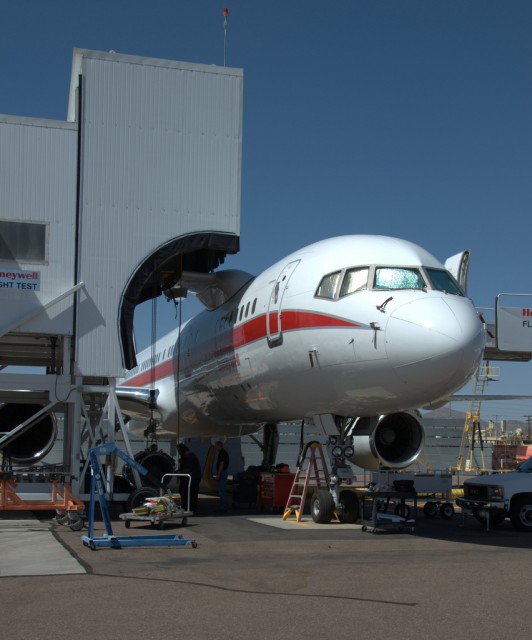
Thanks for the fun story, but (Ahem…) a bit stale? I do not follow a lot of AV blogs, but at least three on my list have already reported the Honeywell Blog (press?) day. On the bright side, this article is well written, to often a rare experience at ALR. (Sorry, but dem be da fax!)
And heck yes, Honeywell is leading the pack with new in-flight and ground control systems. We know about their modified C580 test bed and some of the others, but the detail is impressive. Honeywell’s theory, something like, ‘everything the pilot needs to know and no more – and on time,’ is spot-on. Those engineers are producing world-class flight information and control systems. If the general cycles repeat themselves, we;ll see these new systems first in small (private/corporate) jets, then scaled up to the transport class and eventually down to GA class aircraft. While the unit costs remain high, the functionality of their several systems remains world-class. Honeywell in on a mission, a grand one, and they employ some of the best engineers in the field. Good report, JLJ! Thank you.
Greetings, Cook!
Thanks for reading and for your candid feedback. I agree, timeliness is certainly an area I need to focus on.
As for the future of aviation: While no one is quite sure what it will look like, I’m confident that the engineers at Honeywell Aero will be influencers. If past trends are any measure of the future then I bet you are right with the newest tech being adopted with executive jets first. In fact, Honeywell has an entire lab dedicated to Dassault. 😉
Thanks again for reading.
-JLJ
Great job, JL! Saw that test 757 at BFI a few years back – certainly an interesting use of a 757.
Anything to keep ’em flying!
In search of seikeng for a short time for any good quality view involving this one point . Researching in Search engines I eventually have discovered this page. Reading this So i’m thrilled to say that I have a really good sense I discovered just what I was looking for. For certain i will make sure to don’t forget this web-site and check it out constantly.